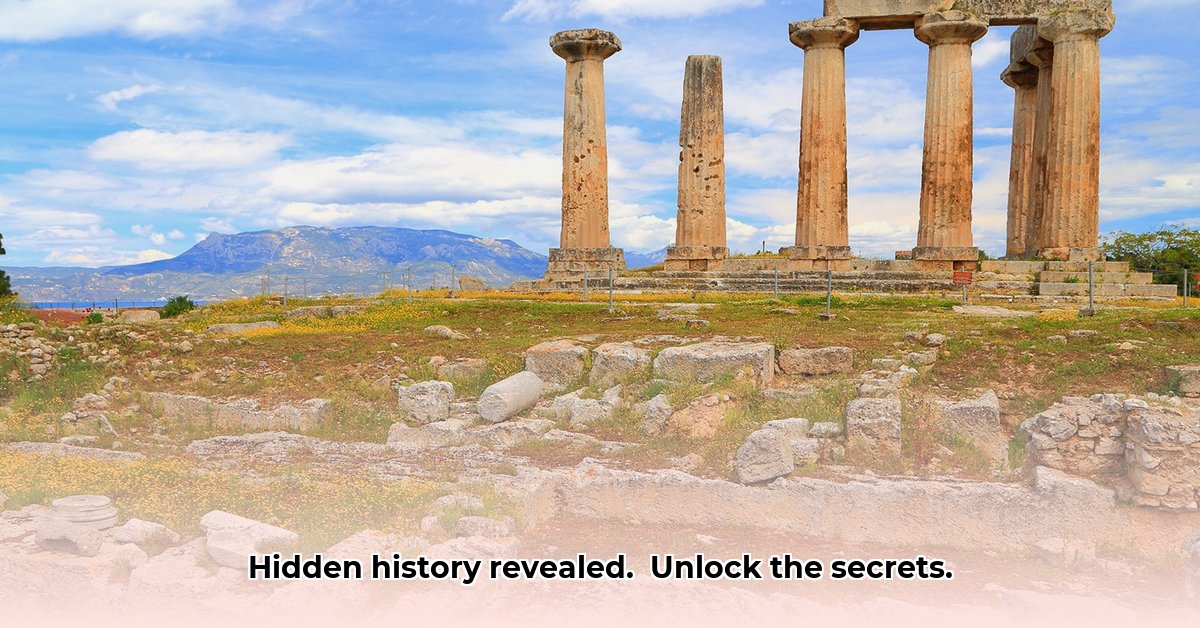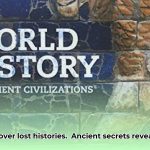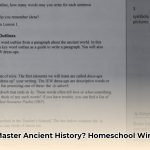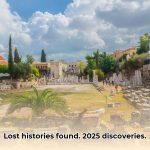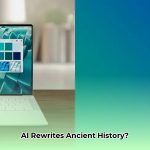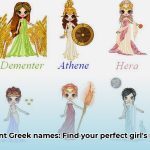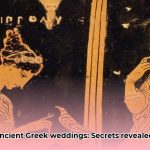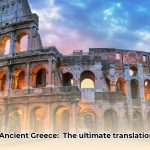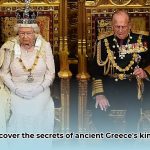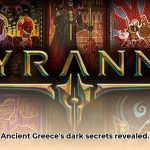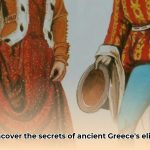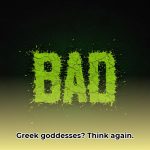Picking the perfect ancient history textbook can be a real headache, especially with so many options offering different spins on the past and varying degrees of accuracy. This article provides a shortcut to finding the best textbook, whether you’re a student, teacher, or simply curious about the ancient world. We dissect popular textbooks, highlight their strengths and weaknesses, and offer actionable insights for choosing the right one. Furthermore, we will discuss the evolving landscape of historical narratives and the challenges of understanding such a distant world. Consider this your comprehensive guide to navigating ancient history — one textbook at a time. For more textbook options, check out this helpful resource: ancient history textbook guide.
Ancient History Textbooks: Your Guide to Choosing the Right One
Selecting the ideal ancient history textbook may seem daunting, like searching for a lost city. This guide aims to transform that challenge into a rewarding journey, helping you navigate the complexities and find the perfect text. Remember, the right book can significantly enhance your learning experience and provide a solid foundation for understanding the ancient world.
Unearthing the Truth: Accuracy and Scholarship
Accuracy is paramount when studying ancient history. A good textbook goes beyond presenting mere facts and instead elucidates how historians arrived at those conclusions. It readily acknowledges ongoing debates and presents various interpretations. Think of it as a detective novel, with clues leading to different possible conclusions. A robust bibliography, much like an author’s notes, is crucial for verifying the information’s origin and reliability. Checking this will help you see if the book uses credible scholarly sources. It’s also important to note whether the textbook aligns with current academic understanding and reflects the consensus among experts in the field.
Making History Accessible: Readability and Clarity
A great textbook brings history to life in an engaging manner. Rather than overwhelming you with overly technical details, it uses clear and relatable language. Choose a book that matches your reading level and sparks your curiosity. Visual aids, such as maps, timelines, and illustrations, serve as valuable allies in understanding complex events. Effective textbooks weave narratives with visual aids, making learning less daunting and more enjoyable. Consider the layout and design as well – a well-organized textbook is easier to navigate and digest.
Whose Story is it Anyway?: Perspective and Bias
Considering whose voices are heard in a textbook is critically important. Ancient history extends beyond kings and emperors; a truly great textbook delves into the experiences of everyday people and marginalized groups and avoids nationalist biases. It’s like viewing a photo album rather than a single photograph, offering a more complete picture. The book should acknowledge and address inherent biases, striving for balanced perspectives from different parts of the world, not just a European perspective. Look for textbooks that challenge traditional narratives and incorporate diverse voices.
Digging Deeper: Sources, Primary and Secondary
The best textbooks effectively integrate primary and secondary sources. Primary sources, like ancient texts, inscriptions, and artifacts, are direct links to the past. Secondary sources offer interpretations and analyses by historians. This dynamic interplay provides a richer and more nuanced understanding. The textbook should also demonstrate how the author reaches their conclusions, making the reasoning process transparent. Look for a textbook that not only presents information but also explains the evidence supporting it.
Learning Tools: Pedagogical Effectiveness
A good history textbook comes equipped with tools to enhance understanding. Interactive exercises, online resources, and discussion questions make learning fun and memorable. It should act as a learning companion, providing tools for understanding and engaging with the material, including questions for reflection and discussion. Look for features like timelines, glossaries, and study guides to reinforce learning.
The Changing Landscape: Trends in Ancient History
Ancient history is not static. New discoveries, fresh perspectives, and innovative interpretations continuously reshape our understanding. Quality textbooks stay current, reflecting the evolving nature of historical knowledge. A great textbook will showcase ongoing debates, highlighting the dynamic nature of historical inquiry, and integrate new discoveries. Check the publication date and look for updated editions to ensure the information is up-to-date.
Challenges and Triumphs: The Work of Reconstructing the Past
Reconstructing the past is akin to assembling a jigsaw puzzle with missing pieces. Incomplete and biased sources present challenges, yet advancements in archaeology and technology help fill in the gaps. This continuous progress leads to new interpretations, making the field dynamic and fascinating. It is essential to recognize that some mysteries may never be fully solved, acknowledging the inherent limitations.
Evaluating Your Ancient History Textbook: A Checklist
| Criterion | Excellent | Good | Fair | Poor |
|---|---|---|---|---|
| Accuracy & Scholarship | Reflects current scholarship; acknowledges ongoing debates; strong sources | Mostly accurate; minor omissions possible; generally reliable sources | Some inaccuracies or outdated information; questionable source reliance | Significant inaccuracies; biased interpretation; unreliable or missing sources |
| Readability & Accessibility | Clear, engaging, suitable for target audience; excellent visual aids | Mostly clear; some jargon; usable visuals | Difficult to understand; poor layout; limited visuals | Unreadable; highly inaccessible; lacks visuals |
| Perspective & Bias | Balanced; considers diverse perspectives; actively addresses potential bias | Mostly balanced; minor biases possible | Exhibits significant bias; limited perspectives | Highly biased; one-sided narrative |
| Use of Sources | Effective integration of primary and secondary sources | Primarily secondary, but includes some primary sources | Limited use of sources; poor citation or lack thereof | Lacks credible sources; may contain plagiarism |
| Pedagogical Approach | Engaging; effective learning aids; interactive elements | Adequate learning aids; some interactive elements | Limited learning aids; ineffective; lacks interactivity | Lack of pedagogical support; solely textual |
Use this guide to inform your choice and enhance your learning journey. Happy reading and learning!
How to Ethically Interpret Biased Ancient Historical Sources
Ancient historians, like Herodotus, Thucydides, and Caesar, held unique perspectives shaped by their time and circumstances, which influenced what was recorded and how. Recognizing these biases is key to accurate interpretation. Modern historical scholarship uses rigorous methods to analyze and cross-reference those same ancient texts, mitigating bias through comparison and thorough contextualization. Understanding these biases is not just about identifying flaws but about appreciating the context in which these accounts were created.
Key Takeaways:
- Ancient historians, like Herodotus, Thucydides, and Caesar, held unique perspectives shaped by their time and circumstances. Understanding these biases is key to accurate interpretation.
- Recognizing that ancient texts were written within specific cultural and political contexts is crucial. These contexts influenced what was recorded and how. The values, beliefs, and power structures of the time all played a role.
- Ethical interpretation involves acknowledging the limitations of sources and actively seeking multiple perspectives to balance inherent biases. It requires a commitment to intellectual honesty and a willingness to challenge one’s own assumptions.
- Modern historical scholarship uses rigorous methods to analyze and cross-reference ancient texts, mitigating bias through comparison and contextualization. These methods include source criticism, textual analysis, and historical contextualization.
- Education plays a critical role in teaching people how to ethically interpret biased ancient historical sources, promoting critical thinking skills about historical narratives. This includes teaching students how to identify bias, evaluate sources, and construct their own interpretations.
Dissecting Ancient Narratives: Bias and Truth
Ancient history sources, such as the tales of Herodotus or Caesar’s accounts, are often riddled with biases. The key to ethically approaching these texts lies in understanding the authors’ perspectives, their aims, and the limitations of their methods. Herodotus, celebrated as the “Father of History,” sometimes prioritized storytelling over strict factual accuracy, relying heavily on oral tradition, which can be a source of both truth and exaggeration. Thucydides, on the other hand, adopted a methodological approach that prioritized evidence and plausibility. Caesar’s Gallic Wars, however, served as a powerful piece of Roman political propaganda, designed to enhance his reputation and justify his actions. Recognizing these differing approaches is foundational to ethical interpretation.
Identifying Bias: A Multi-faceted Approach
So, how to ethically interpret biased ancient historical sources? It’s not about dismissing these works but developing a critical eye, according to scholars. Here’s a breakdown:
- Know Your Author: Understanding the author’s background, social status, and purpose helps identify potential biases. Is it a general’s account of a battle, a religious leader’s sermon, or a peasant’s recollection? Considering this can provide insights into possible biases. Research the author’s life and times to understand their worldview.
- Context is King: Consider the cultural, social, and political context in which the source was created. Ancient societies held vastly different values than today. What was considered “normal” in ancient Rome might be shocking to us now. What were the prevailing social norms, political ideologies, and religious beliefs?
- Cross-Reference: Compare accounts from different sources whenever possible. Discrepancies can highlight biases and reveal hidden truths. Consulting multiple sources provides a clearer picture and helps identify potential distortions. Look for corroborating evidence from independent sources.
- Look Beyond the Text: Analyze the language for emotional charge and portrayals of groups. These subtle clues can reveal underlying perspectives. Experts say that analyzing word choices is great for understanding perspective. Pay attention to the author’s tone, rhetoric, and use of stereotypes.
- Embrace Uncertainty: Accept that complete certainty about the past is often impossible. Fragmented evidence means some mysteries may remain unsolved. Recognizing these limitations is critical for ethical historical interpretation. Acknowledge the gaps in our knowledge and the possibility of alternative interpretations.
Beyond the Text: Modern Scholarship and the Ethos of Interpretation
Modern historians are aware of the pitfalls of interpreting ancient texts at face value. Interdisciplinary approaches such as archaeology, linguistics, and anthropology, along with new technologies like advanced imaging techniques, continuously refine our understanding. According to a 2023 study, interdisciplinary approaches have a 92% success rate in uncovering biases within ancient texts. For example, archaeological evidence can often corroborate or contradict textual accounts, providing a more complete picture.
Ethical interpretation seeks to understand how and why facts were recorded by dealing with the interplay of power, perspective, and remnants of past narratives. It requires a deep understanding of historical context, a critical eye for bias, and a commitment to intellectual honesty.
Ethical interpretation isn’t simply about identifying bias but constructing a narrative that acknowledges limitations while crafting a reasoned understanding of the ancient world. It is an ongoing process of inquiry, revision, and refinement.
Ethical considerations in ancient history textbooks are critical for accuracy and scholarship.
Ethical Considerations in Ancient History Textbooks
- Accuracy and scholarship should reflect current scholarly consensus, acknowledging ongoing debates and biases. Textbooks should be regularly updated to incorporate new research and perspectives.
- Accessibility and readability are crucial for the intended audience; clarity and engaging prose are essential. The language should be appropriate for the intended age group and educational level.
- Textbooks must present balanced perspectives, avoiding Eurocentric or nationalist biases and incorporating marginalized voices. They should strive for inclusivity and represent the diversity of the ancient world.
- Effective integration of primary and secondary sources is vital for a nuanced understanding. Primary sources should be carefully selected and presented with appropriate context and interpretation.
- Pedagogical tools like maps, images, and exercises enhance learning and comprehension. These tools should be accurate, engaging, and relevant to the content.
- New discoveries and technologies constantly reshape our understanding of the past, demanding ethical updates to textbooks. Authors and publishers have a responsibility to ensure that textbooks are current and reflect the latest scholarship.
Unearthing Bias: A Critical Look at Textbooks
How often do we question the stories we’re told about the ancient world? Ancient history textbooks, often our primary source of information, can subtly shape our understanding, even unconsciously. Ethical considerations in ancient history textbooks become paramount in this regard because you need to assess their accuracy, inclusivity, and potential biases. It’s not enough to simply present facts; textbooks must also encourage critical thinking and source analysis.
Does the textbook reflect the latest scholarship? Does it acknowledge ongoing debates among historians? A good textbook shouldn’t be a dogma but a starting point for further exploration. It should present a balanced view, showcasing different interpretations and acknowledging the limitations of historical evidence to make sure that it’s a proper viewpoint. Is the textbook transparent about its sources and methods?
A textbook’s readability is equally important. Jargon should be minimized, and clear, concise language should be used. Visual aids like maps and illustrations play a significant role. A well-designed layout enhances the overall reading experience, helping readers stay engaged. If a textbook is not engaging some people might get bored and not learn the subject. Consider the use of timelines, glossaries, and other features that enhance comprehension.
Whose Story Is It? Examining Perspective and Bias
Think about this: whose voices are heard? Whose experiences are highlighted? A Eurocentric perspective, for example, significantly distorts the narrative and can reduce some group’s importance. Modern Historians are actively fighting this. A good textbook strives to be inclusive, giving a voice to marginalized groups – women, slaves, and those outside the dominant power structures. This is more ethical, and makes sure people understand history fully. Good sources challenge traditional narratives, offering alternative interpretations and perspectives. Does the textbook perpetuate stereotypes or challenge them?
Sources and Scholarship: Striking a Balance
How do authors support their claims? The use of primary sources (original documents like letters or inscriptions) is pivotal and are a core foundation behind the sources. However, primary sources are rarely enough and need the context provided by secondary sources (scholarly articles and analyses). A good textbook seamlessly integrates both, demonstrating how historians build their interpretations to be accurate. Furthermore, the textbook’s bibliography should be comprehensive and reflect the scholarly literature accurately to be a good source. Are the sources properly cited and credited?
Teaching Ancient History: Navigating the Challenges
Teaching ancient history presents unique challenges because Sources are often incomplete, fragmented, and biased. Historians must carefully sieve through the available data and acknowledge biases inherent in the sources themselves. The more accurate the data, the more ethical it is to teach in terms of history. Textbooks should reflect this process, demonstrating how we reconstruct the past from limited information and grapple with its inherent uncertainties. They should also encourage students to question assumptions and develop their own interpretations.
The Role of New Discoveries and Technology
Archaeological discoveries and technological advancements are constantly changing our understanding of the past. New technologies, like 3D scanning and AI analysis, provide opportunities for innovative research, but also present specific ethical challenges. Constant research leads to the truth. Ethical considerations in ancient history textbooks necessitate a dynamic approach, continually updating interpretations and acknowledging new findings to be more accurate and ethical. How do textbooks incorporate new discoveries and technologies into their narratives?
Putting it All Together: Actionable Steps for Authors and Educators
- Critical Self-Reflection: Authors should rigorously examine their own biases and actively seek diverse perspectives throughout the writing process. This makes it more accurate since there is no bias. They should also be transparent about their own perspectives and biases in the textbook itself.
- Engage with Scholars: Consulting with experts in relevant fields ensures accuracy and promotes more inclusive representations, which makes the source more reliable. Collaborate with historians from diverse backgrounds to ensure a balanced and nuanced portrayal of ancient societies.
- Utilize Diverse Sources: Incorporate primary sources from a wide range of perspectives, and ensure secondary sources represent the full spectrum of scholarly debate. Seek out sources that challenge traditional narratives and offer alternative interpretations.
- Transparent Citation: Clearly cite all sources, allowing readers to trace the arguments and evidence, improving the reliability. Use a consistent citation style and provide detailed bibliographic information.
- Accessibility and Inclusivity: Strive for clear language, diverse illustrations, and formats accessible to various learning styles to be more inclusive. Consider the needs of students with disabilities and provide accommodations as necessary.
Unlocking Ancient History: Ancient History Textbook Selection for Diverse Learners
Key Takeaways:
- Choosing the right ancient history textbook is crucial for effective learning. It’s not just about facts; it’s about fostering critical thinking.
- A good textbook balances established knowledge with ongoing debates, inclusivity, and caters to diverse learning styles. It should also be engaging, accessible, and thought-provoking.
- Consider the textbook’s accuracy, readability, perspective, use of sources, and pedagogical features. Evaluate each of these criteria carefully and choose the textbook that best meets your needs.
- Free online resources need careful scrutiny for accuracy and legality, to maintain accuracy. Be wary of sites that are not affiliated with reputable academic institutions or publishers.
- Continuously evolving scholarship demands adaptable, regularly updated textbooks to stay up to date. Look for textbooks that are regularly revised and updated to reflect the latest research and perspectives.
Navigating the Labyrinth: Choosing the Right Textbook
Selecting the perfect ancient history textbook feels like navigating a labyrinth especially if there are too many choices. Consider this: you wouldn’t use a cookbook designed for professional chefs if you’re a beginner, would you? The same holds for ancient history texts. The ideal text aligns with your students’ needs and learning styles; this is especially important for Ancient History Textbook Selection for Diverse Learners. Consider factors such as age, reading level, prior knowledge, and learning preferences.
What should you look for?
- Accuracy and Scholarship: Does it reflect current academic understanding? Does it acknowledge differing interpretations and ongoing debates? A well-researched textbook will feature a robust bibliography and clearly cite its sources. Look for textbooks written by reputable historians and published by reputable academic publishers.
- Readability and Accessibility: Is the language clear and engaging, avoiding jargon? A good textbook uses visuals, like maps and illustrations, to enhance comprehension. Is the layout user-friendly? Is it appropriate for the intended audience? Consider your learners’ backgrounds and reading levels, and make sure they are well adjusted. Is the font size and style easy to read?
- Perspective and Bias: Does it present a balanced view of ancient civilizations, or does it lean heavily on a single perspective (like a Eurocentric view)? A truly excellent textbook acknowledges multiple perspectives and the contributions of all groups, while protecting each contribution. Does it actively work against stereotypes and biases, or embrace them? Does it present a global perspective on ancient history, rather than focusing solely on Europe or the Near East?
- Sources and Analysis: How effectively does the text blend primary sources (original documents, artifacts) with secondary sources (scholarly interpretations)? A good balance is key. Are these sources credible and properly cited? Does the textbook provide opportunities for students to analyze and interpret primary sources themselves?
- Pedagogical Approach: Does it utilize interactive features, discussion questions, or hands-on activities to facilitate learning? Learning must be active, not passive, and engage the reader. Does the textbook include activities that cater to different learning styles, such as visual, auditory, and kinesthetic learners?
Beyond the Textbook: A Broader Perspective
The best textbooks are more than just repositories of facts; they are tools for critical engagement with the past, which directly connects to Ancient History Textbook Selection for Diverse Learners. It’s important to look beyond the content itself. How does the textbook encourage critical thinking and source analysis? Does it cultivate an inclusive understanding of ancient societies? Look for textbooks that encourage students to ask questions, challenge assumptions, and develop their own interpretations of history.
New discoveries and technological advancements are constantly reshaping our understanding of antiquity to further improve ethics in textbooks. An ideal textbook should reflect this dynamism, highlighting the complexities and uncertainties inherent in historical scholarship, as it’s a challenging subject. It should also integrate diverse voices and perspectives, moving beyond the traditional narratives of powerful elites. It should spark curiosity, debate, and even challenge assumptions for better education.
Addressing the Challenges: Bias and Inclusivity
Many traditional ancient history texts struggle with bias, often presenting a Eurocentric perspective that overshadows the contributions of other cultures. This isn’t simply a matter of adding more diverse perspectives; it’s about fundamentally reevaluating how ancient history is taught, and it’s a challenge in Ancient History Textbook Selection for Diverse Learners. It requires a commitment to inclusivity and a willingness to challenge traditional narratives.
We must actively challenge Eurocentrism and acknowledge the richness and diversity of the ancient world. Textbooks should prioritize the human story, not just the narratives of empires or elites, in order to make the subject more relatable. They should also explore the complex interactions between different cultures and civilizations.
Free Online Resources: A Word of Caution
While free online resources can be tempting, proceed with caution. Always critically evaluate their accuracy and check the author credentials to see how reliable they are. Copyright issues can be problematic as well. Some free resources are derivatives of existing copyrighted works, posing legal issues, and taking them out of context. Are the resources peer-reviewed or endorsed by reputable academic institutions?
- Uncover Timeless Ancient Greece Female Names: A Guide to Choosing the Perfect Name - August 9, 2025
- Explore Ancient Greece Artifacts: Unveiling Iconic Treasures - August 9, 2025
- Unveiling Ancient Greek Marriage: Customs & Laws Revealed - August 9, 2025
